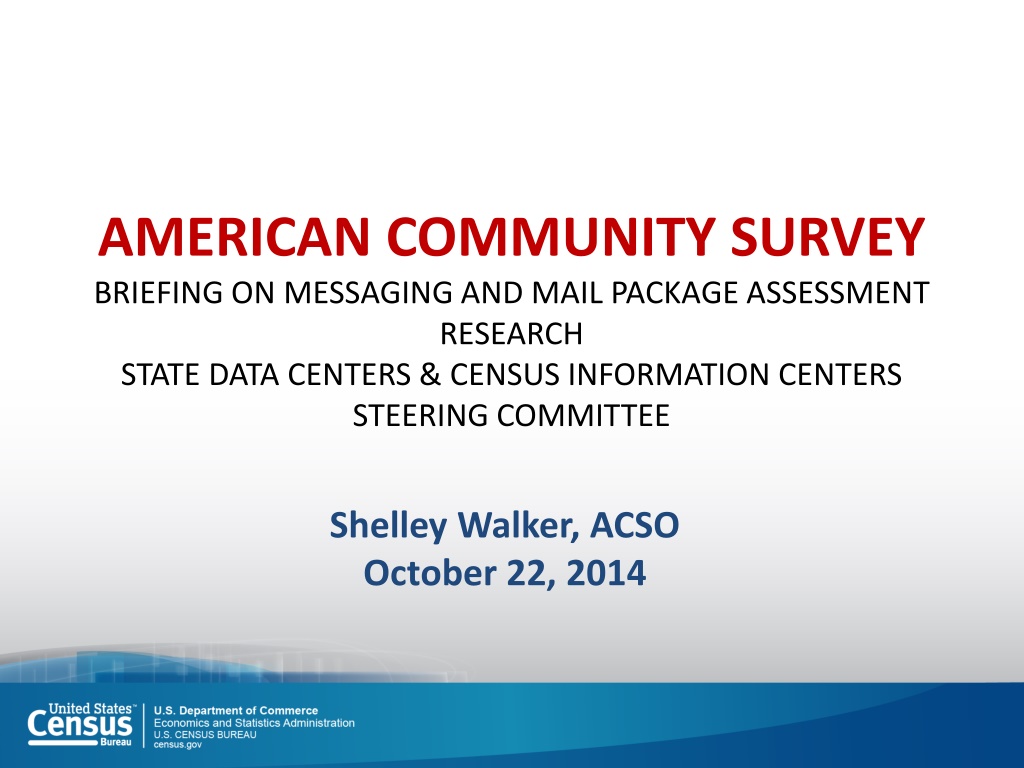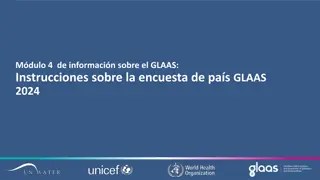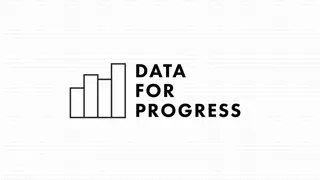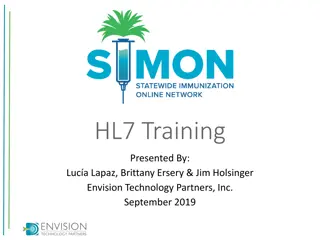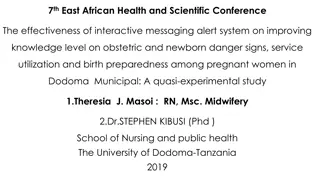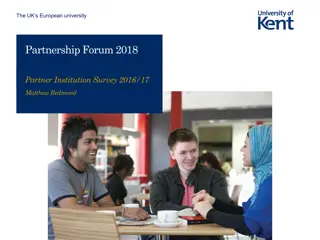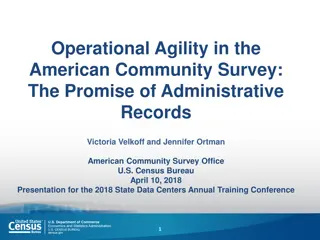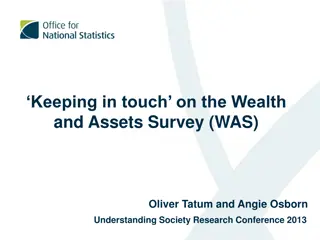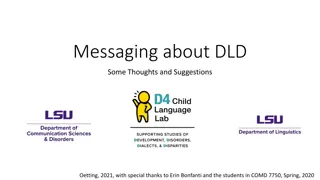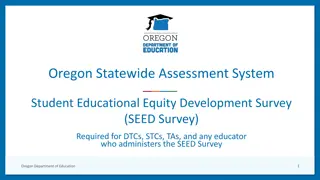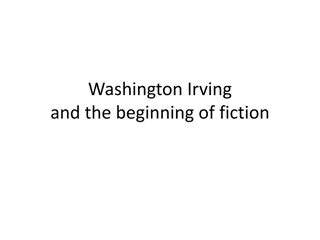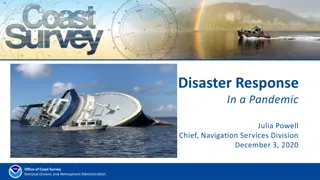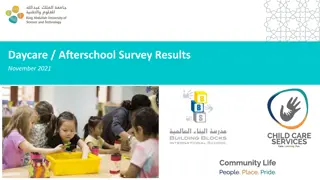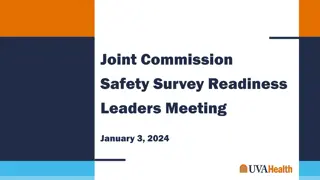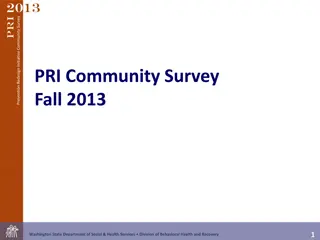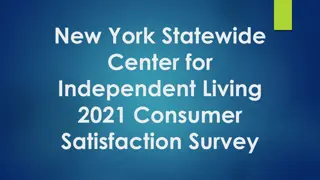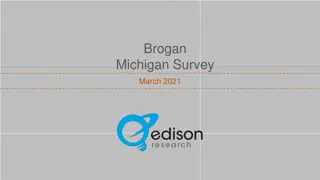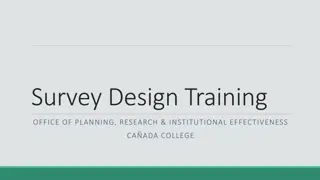American Community Survey Messaging Research
This briefing assesses messaging and mail package strategies to enhance ACS self-response rates. Research goals include message testing for outreach, data dissemination, and census support. The project outlines phases from mental models interviews to field testing. Key findings emphasize community benefits, privacy concerns, and language barriers in survey response.
Uploaded on Feb 22, 2025 | 0 Views
Download Presentation

Please find below an Image/Link to download the presentation.
The content on the website is provided AS IS for your information and personal use only. It may not be sold, licensed, or shared on other websites without obtaining consent from the author.If you encounter any issues during the download, it is possible that the publisher has removed the file from their server.
You are allowed to download the files provided on this website for personal or commercial use, subject to the condition that they are used lawfully. All files are the property of their respective owners.
The content on the website is provided AS IS for your information and personal use only. It may not be sold, licensed, or shared on other websites without obtaining consent from the author.
E N D
Presentation Transcript
AMERICAN COMMUNITY SURVEY BRIEFING ON MESSAGING AND MAIL PACKAGE ASSESSMENT RESEARCH STATE DATA CENTERS & CENSUS INFORMATION CENTERS STEERING COMMITTEE Shelley Walker, ACSO October 22, 2014
Research Goals Primary: Develop and test messages and mail package refinements to increase ACS self-response rates Secondary: Apply insights from ACS message testing to support general outreach, data dissemination, materials development, and call center and field operations Help inform the 2020 Decennial Census Communications Campaign 2
Research Overview: Project Phases Messaging Research December 2013: Mental models interviews with internal stakeholders January 2014 February 2014: Key informant interviews with stakeholders January 2014: Deliberative focus groups with stakeholders who are distrustful of the government January 2014 February 2014: Message testing - Benchmark survey March 2014 April 2014: Message testing: Refinement survey Mail Package Assessment May 2014: Creative design of mail package alternatives and messages to test June 2014 July 2014: Focus groups and one-on-one interviews September 2014: Quantitative online visual testing Field Test To be conducted by ACSO during or after Fall 2014, budget pending 3
Messaging Research Deliberative Focus Groups Conducted focus groups in seven cities (emphasis was on recruiting participants from low-response areas): Albuquerque, NM Atlanta, GA Dallas, TX, Los Angeles, CA - conducted in Spanish with Spanish speakers Richmond, VA St. Louis, MO Washington, DC There were 24 to 28 participants in each group Cities represented diversity in their geographic and racial composition 4
Key Messaging Research Findings Key Findings across Initial Research America knows Census but not ACS Perception of irrelevant or unnecessary questions raise concerns about privacy People believe the government already has the personal information ACS collects Distrust of government is pervasive Participants frequently evaluated the ACS in terms of tangible, community-level benefits - Community is key People for whom English is not their first language face unique barriers to response Ensure that when interacting with respondents, the field representatives have the right materials and messages People value convenience and choice in response options 5
Mail Package Assessment Research Phase Create designs of mail package alternatives and messages to test: May 2014 Mail Package Cognitive Interviews: June 23, 2014 July 2, 2014 Online Visual Testing: September 5, 2014 September 19, 2014 6
Review of Mailing Packages Independent Expert Input Don Dillman (external SME) reviewed the alternate mail designs and provided us with his feedback Agrees with Reingold (contractor) that we should eliminate the prenotice letter and simplify the paper questionnaire mailing Strengthen the cover letter mailing and communications across the mail pieces about the mandatory request 7
Theme 1: Official Envelope Front Back 8
Theme 2: Community Envelope Front Back 9
Theme 3: Patriotic Envelope Front Back 10
Mail Package Assessment Focus Groups Conducted six focus groups with a broad range of participants (emphasis was on recruiting participants from low-response areas): Chicago, IL Fresno, CA Miami, FL - conducted with bilingual English-Spanish speakers New Orleans, LA New York NY Phoenix, AZ Each group was 90 minutes long approximately 10 participants Cities represented diversity in their geographic and racial composition 11
Key findings from the mail package assessment The current package was seen as most effective Consider a hybrid of effective design elements The ACS name does not register Punitive" messages resonate more than "altruistic" messages. 12
Online Visual Testing Uses three web-based exercises to identify key information about the designs: Mail stack exercise: an interactive simulation of mail sorting Image click analyzer (heat map): asks respondents to click on design elements, illustrating what attracts attention Message highlighting: asks respondents to highlight words and phrases that they find compelling 13
Key findings from the Online Visual Testing Visual design elements and deadline messaging can have a significant impact on how people read and remember mail items The U.S. Census Bureau logo should be prominently featured on mail items 14
Key findings from the Online Visual Testing Key words and phrases in letters should be emphasized using callout boxes, line spacing, and bolded text Your response is required by law attracts more attention than any other message It is possible to overdo the commercial marketing look and feel 15
Reports The following reports are final: Mental Models Interviews with Internal Stakeholders Key Informant Interviews with Stakeholders Deliberative Focus Groups with Stakeholders Message Testing: Benchmark Survey Message Testing: Refinement Study Mail Package Research Access reports at: http://www.census.gov/acs/www/library/by_year/2014 16
Next Steps - Field Test Census Bureau will receive recommendations October 2014 Census Bureau will develop and implement field tests Fiscal Year 2015, budget pending Census Bureau will analyze and determine final recommendations for program implementation Fiscal Year 2015 17
Questions? 18
